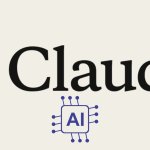In the long run, artificial intelligence trends in the global tech business are crucial to watch for.
The word “artificial intelligence,” which has made life easier in this hectic period, is currently trending in the worldwide deep tech market.
Numerous sectors throughout the world are benefiting from autonomous systems, cybersecurity, automation, RPA, and other advantages provided by AI models. To enhance productivity and efficiency seamlessly, tech- and data-driven businesses need to be aware of emerging artificial intelligence developments.
Following one AI prediction can encourage customer interaction and enable the efficient and successful deployment of AI models. Let’s look at some of the most profitable artificial intelligence developments for 2023 in the fiercely competitive IT business.

1. Development in predictive analytics
The creation of predictive analytics for improved research is one of the most popular themes in artificial intelligence. It is based on the use of data, statistical algorithms, and machine learning methods to determine the likelihood of future outcomes using historical data. The idea is to make the most accurate prediction of what will happen in the future by drawing on prior information.
Predictive analytics did not just suddenly appear; rather, as one follows its history, it emerges from the realm of mathematics and statistics and captures the interest of business analysts and market experts. This is especially true with the advent of up-ending interactive and user-friendly technology.
2. Large Language Models (LLM)
The foundation of massive language models is machine learning, which uses algorithms to recognize, forecast, and produce human languages from very huge text-based data sets. The models include Sentiment Analysis, Machine Translation, Sentence Analysis, Statistical Language Models, Neural Language Models, Speech Recognition, and Text Suggestions. These models will work with AI to transform science and society. According to this AI prediction, upcoming AI models won’t just reflect the data, but also our personal values.
3. Information security (InfoSec)
The methods and devices used by companies to safeguard information fall under the category of information security. It comprises settings for policies that are essentially designed to stop the act of stopping unlawful access to, use of, disclosure of, disruption of, modification of, an inspection of, recording of, or destruction of information.
With AI models that cover a wide range of sectors, from network and infrastructure security to testing and auditing, AI prediction claims that it is a developing and expanding field. To safeguard sensitive data from potential cyberattacks, information security procedures are constructed on the three fundamental goals of confidentiality, integrity, and availability, or the CIA.
4. Introduction of improved autonomous systems
Better automated systems are being introduced, which is one of the major themes in artificial intelligence. The development of drone technology, autonomous exploration, and bio-inspired systems are all priorities for the upcoming generation of autonomous systems powered by AI models.
Technologies like flying, self-driving ambulances, and prosthetic legs that automatically adapt to a wearer’s stride using machine learning are the focus of research. In order to prepare autonomous systems for life outside of the lab, it is important to teach them how to think for themselves and act accordingly.
5. NFT-based art
It is asserted that NFT art gives artists more power. It is redefining how NFT artists may work, develop new projects, and take ownership of their art, and it is quickly transforming how artists are rewarded. The combination of NFT and AI models can greatly aid in the establishment of art schools because they have the potential to democratize and decentralize wealth as well as provide access to new revenue streams. The argument is that now that digital artwork and files can be registered as unique objects, artists may finally take charge of their own artistic success thanks to NFTs.
6. Digital avatars
As a visual form or image that is created to represent a person in the virtual world, a digital avatar is one of the current and potential artificial intelligence trends. According to the AI forecast, cutting-edge technology like artificial intelligence and augmented reality will make sure that human-like avatar bodies are created, which will then be mind-linked to remote control operation. An avatar is a digital depiction of a person with intelligence that offers human-like interaction by modeling how our brain handles speech. Avatars are driven mostly by AI models.
7. AI ethics
In general, AI Ethics, also known as the AI value platform, refers to a wide range of considerations for responsible AI that combine three essential factors: safety, security, human concerns, and environmental considerations in AI models. There is not yet a single definition that is universally agreed upon. AI ethics is a set of moral guidelines and methods designed to promote the ethical application of AI. Avoiding AI prejudice, protecting AI privacy, avoiding AI errors, and controlling AI’s environmental impact are some of its main tenets.
8. Military weapons
Military equipment is designed to physically harm enemies during combat, including death or severe bodily harm. Both living things and inanimate objects can be used as weapons. Guns, mortars, rockets, machine guns, grenades, and armor are on the list of such weaponry. The militaries are increasingly utilizing AI for smart and remote features as well as safeguarding soldiers from fatalities and severe ailments. Due to a rise in political unrest, this is quickly emerging as one of the top artificial intelligence themes for 2023.
9. Process discovery
It can be characterized as a combination of tools and methods with heavy reliance on artificial intelligence (AI) and machine learning to assess the performance of persons participating in the business process. In comparison to prior versions of process mining, this one goes further in figuring out what occurs when individuals interact in different ways with various objects to produce business process events.
The methodologies and AI models vary widely, from mouse clicks for specific reasons to opening files, papers, web pages, and so forth. All of this necessitates various information transformation techniques. The automated procedure using AI models is intended to increase the effectiveness of commercial procedures.
10. Embedded Applications (EA)
It is a piece of software that is installed on a device permanently, more precisely in flash memory or ROM. Real-time, fault-tolerance, portability, dependability, and flexibility are the core characteristics of EA. The software is created with a specific purpose in mind for a given piece of hardware, and it must adhere to time, size, energy, and memory limits. Some embedded programs, like the one on our phone, are made to function without being shut off or receiving a reset instruction for weeks, months, or even years at a time.
The image processing systems used in medical imaging equipment, the fly-by-wire aircraft control systems, the motion detection systems used in security cameras, and traffic control are more examples of AI prediction.






